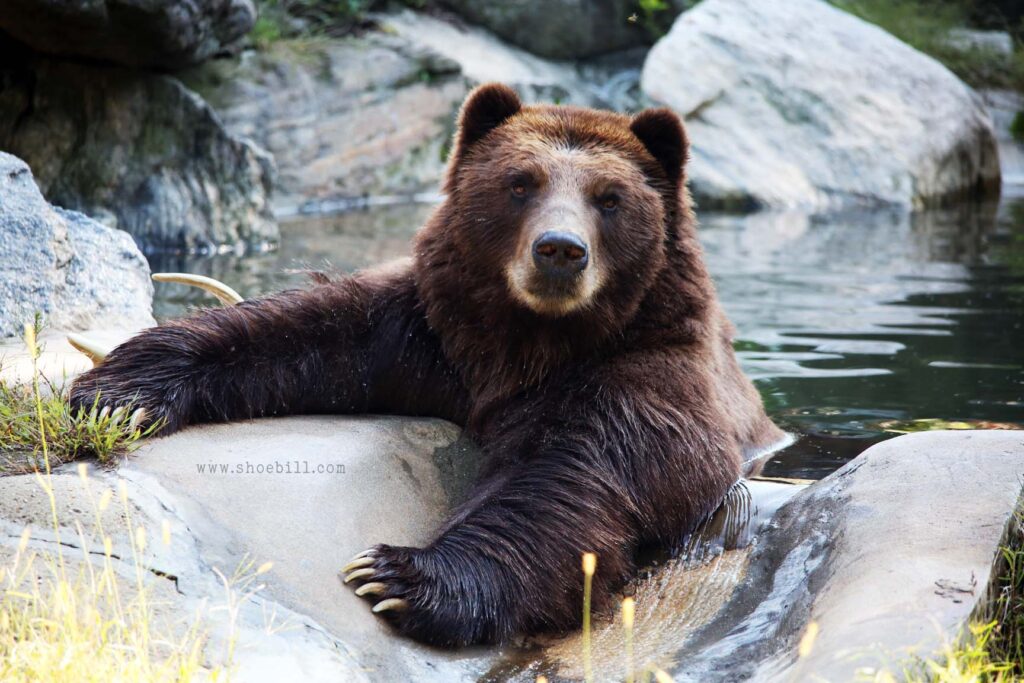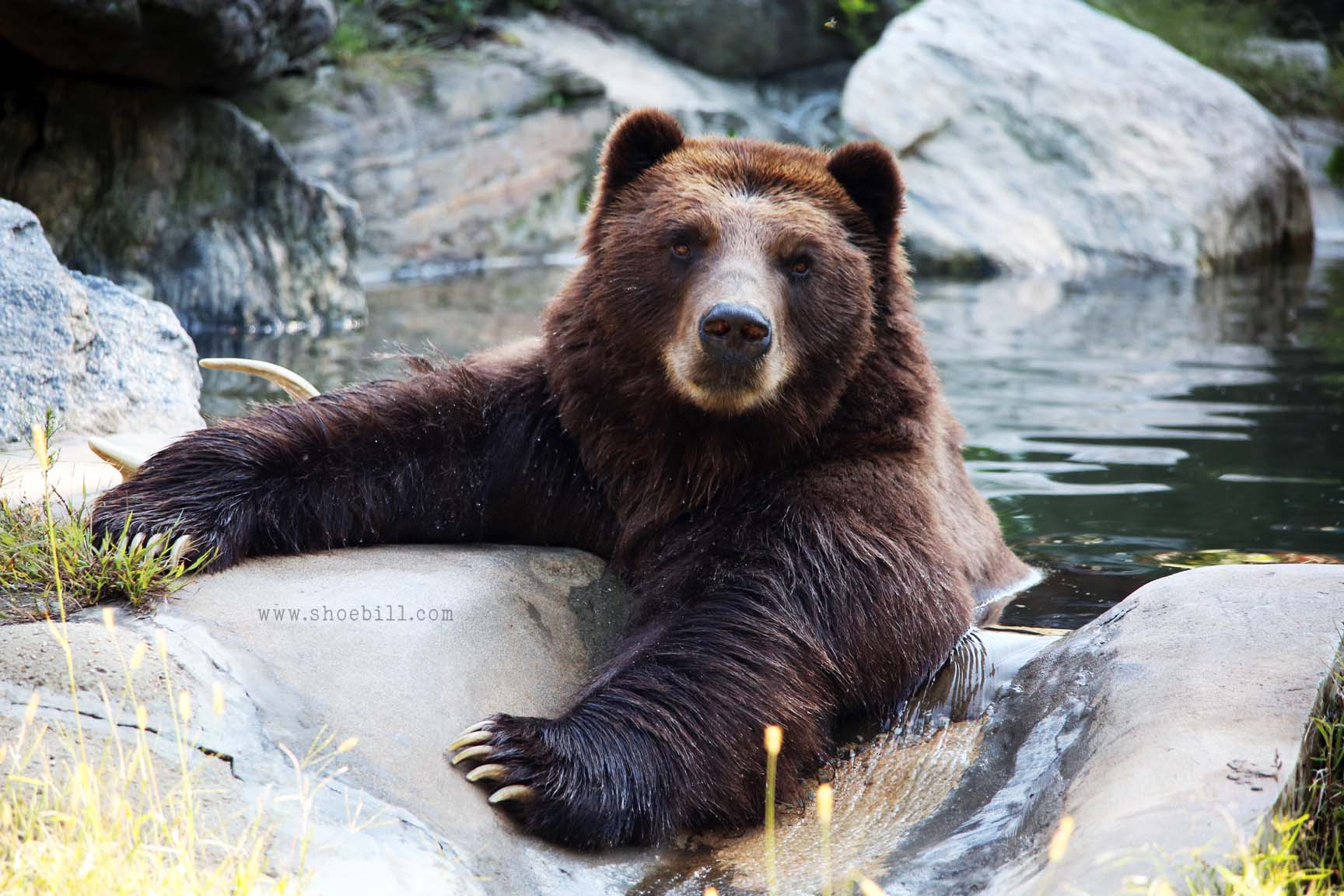Grizzly bear
Grizzly bears (Ursus arctos horribilis) are large and iconic North American mammals known for their distinctive hump on their shoulders, powerful build, and long claws. Here’s a description of their distribution in North America:
- Canada: Grizzly bears are found in various provinces and territories of Canada, including British Columbia, Alberta, Yukon, Northwest Territories, and Nunavut. They inhabit a range of habitats, from coastal rainforests to alpine meadows and boreal forests.
- United States: In the United States, grizzly bears historically ranged across much of the western part of the country, from Alaska and the Pacific Northwest to the Rocky Mountains and as far south as northern Mexico. However, due to habitat loss, hunting, and other factors, their range has been greatly reduced. Currently, they are found in isolated populations in states such as Alaska, Montana, Wyoming, Idaho, and Washington.
Grizzly bears are omnivores with a diet that includes berries, nuts, roots, insects, fish, and occasionally larger prey such as deer or elk. They play a crucial role in ecosystems as seed dispersers and scavengers, helping to maintain the balance of their habitats.
While grizzly bears are considered a threatened species in the contiguous United States, they are still relatively abundant in parts of Canada and Alaska. Conservation efforts, including habitat protection, management of human-bear conflicts, and education about coexistence with bears, are ongoing to ensure the survival of these magnificent animals.



